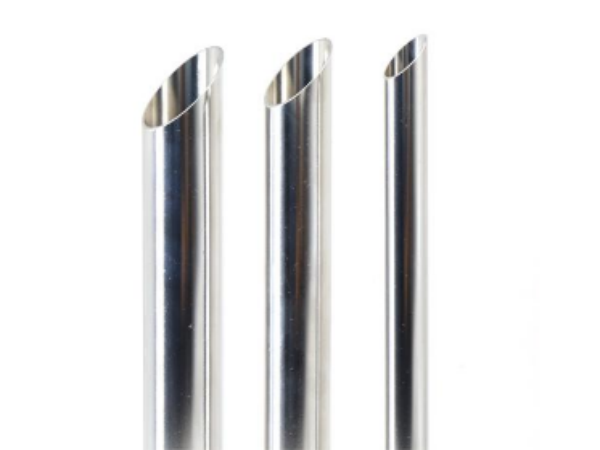How to choose the appropriate diameter of
stainless steel seamless pipe?
In the field of life, drinking water supply pipes have various specifications, which are used in different places and play different roles. When selecting stainless steel water pipes, it is necessary to understand the specifications of stainless steel water pipes. Stainless steel water pipes generally have three pipe outer diameters, inner diameters and nominal diameters. So what is the difference between these three specifications and sizes?
The outer diameter is relatively easy to understand. I learned it in school. The diameter of a circular outer circle is called the outer diameter. It can be measured with a vernier caliper and marked with the symbol Φ. In the water supply project, the outer diameter is a very important parameter, which needs to be treated carefully before purchasing. The outer diameter of the 304 stainless steel water pipe is marked by D, usually by the size of the diameter and the thickness of the wall. For example, a 304 stainless steel water pipe with an outer diameter of 101.6mm and a wall thickness of 2MM can be marked as D101.6*2.

The nominal diameter is usually represented by the symbol DN. The nominal diameter is generally used in the design of the design institute. The nominal diameter is a standard adopted for the convenience of design, production and maintenance of water pipes, also known as the nominal diameter. Usually, the diameter of the pipe after removing the wall thickness is not equal to the inner diameter. For example, if the nominal diameter is 100mm, the outer diameter of the 304 stainless steel water pipe is 101.6mm, the wall thickness is 2mm, and the inner diameter is 101.6-2-2=97.6mm, so the nominal The diameter is not equal to the inner diameter of the outer diameter of the steel pipe minus 2 times the wall thickness. With this standard, other matching water pipes, fittings, valves, etc. can be determined only through the nominal diameter during design.
The inner diameter refers to the diameter of the inner circle of the stainless steel round tube, which is the straight-line distance from one point on the inner side of the inner circle to another point on the inner circle, generally identified by the letter "φ".
What are the classifications of stainless steel
Austenitic stainless steel
Austenitic stainless steel generally belongs to corrosion-resistant steel and is the most widely used type of steel. Among them, 18-8 stainless steel is the most representative. It has good mechanical properties and is convenient for machining, stamping and welding. It has excellent corrosion resistance and good heat resistance in oxidizing environment. However, it is particularly sensitive to the medium containing chloride ions (CL-) in the solution, and is prone to stress corrosion.
304 stainless steel
The most commonly used stainless steel, contains small amounts of chromium and nickel, has a very low carbon content, and is easy to heat treat. It is also better in high temperature resistance, and the general use temperature limit is less than 650°C. 304 stainless steel has excellent stainless corrosion resistance and better resistance to intergranular corrosion. For oxidizing acids, it is concluded in experiments that 304 stainless steel has strong corrosion resistance in nitric acid below the boiling temperature with a concentration of ≤65%. It also has good corrosion resistance to alkaline solutions and most organic and inorganic acids.
304L stainless steel
The low-carbon version of 304 is mainly for the carbon penetration of 304 steel. The lower carbon content minimizes the precipitation of carbides in the heat-affected zone near the weld, which can lead to intergranular corrosion (weld attack) in stainless steels in some environments.
321 stainless steel
It is Ni-Cr-Mo type austenitic stainless steel, its performance is very similar to 304, but due to the addition of metal titanium, it has better intergranular corrosion resistance and high temperature strength. 321 stainless steel has excellent high-temperature stress-rupture performance and high-temperature creep resistance performance. It is used in field open-air machines in the chemical, coal and petroleum industries that require high resistance to grain boundary corrosion, heat-resistant parts of building materials and parts that are difficult to heat treat.
316 stainless steel
Mo is added, so its corrosion resistance, atmospheric corrosion resistance and high temperature strength are particularly good, and it can be used under harsh conditions. The corrosion resistance is better than 304 stainless steel, and it is resistant to the erosion of marine and aggressive industrial atmospheres. Due to the addition of Mo, it has certain corrosion resistance to dilute sulfuric acid and solutions containing chloride ions. 316 has better corrosion resistance and is more resistant to corrosion than 304 in high temperature environments.
316L stainless steel
The carbon content of 316L is far lower than that of 316; and the high carbon content is the main factor causing intergranular corrosion of metals. Therefore, 316L is widely used in important working conditions in the chemical industry, but the price of 316L is high, and 316L is resistant to chlorine. Ion corrosion is better than 316.
High alloy content stainless steel
The nickel content is 29%~30%, and the chromium content is more than 20%. It has good corrosion resistance to acid and hydrochloric acid, but of course it is more expensive.













 Eastern Steel Manufacturing Co.,Ltd not only improve product production and sales services, but also provide additional value-added services. As long as you need, we can complete your specific needs together.
Eastern Steel Manufacturing Co.,Ltd not only improve product production and sales services, but also provide additional value-added services. As long as you need, we can complete your specific needs together.










